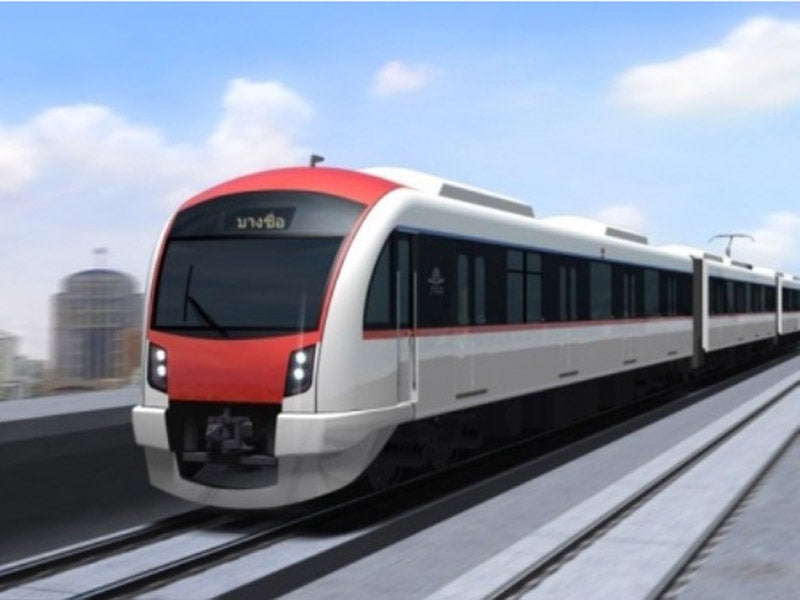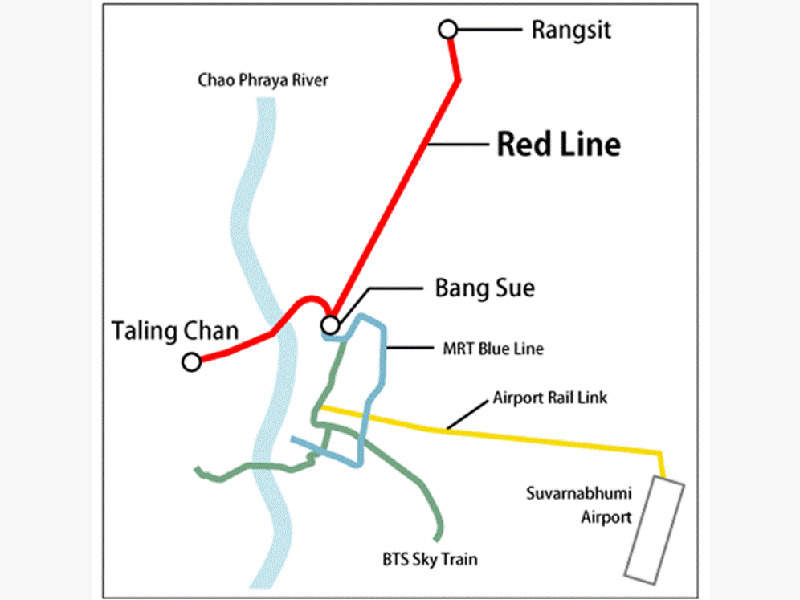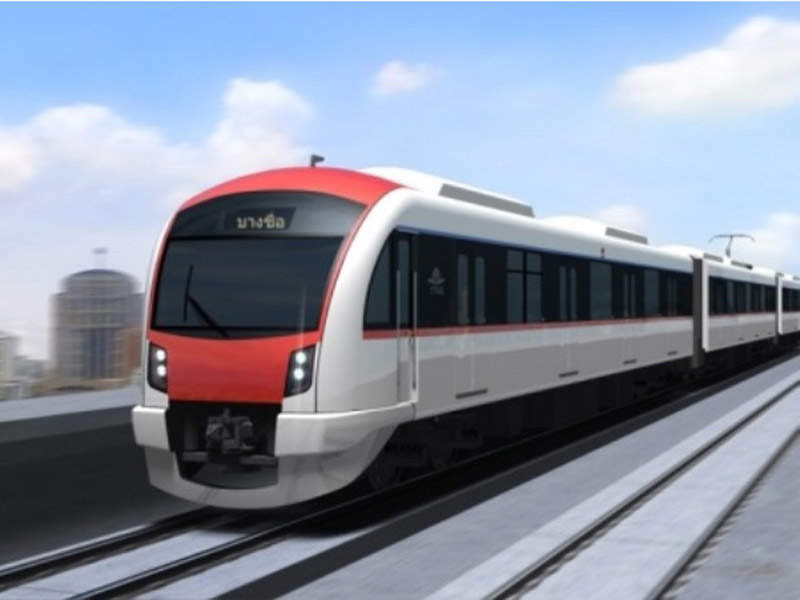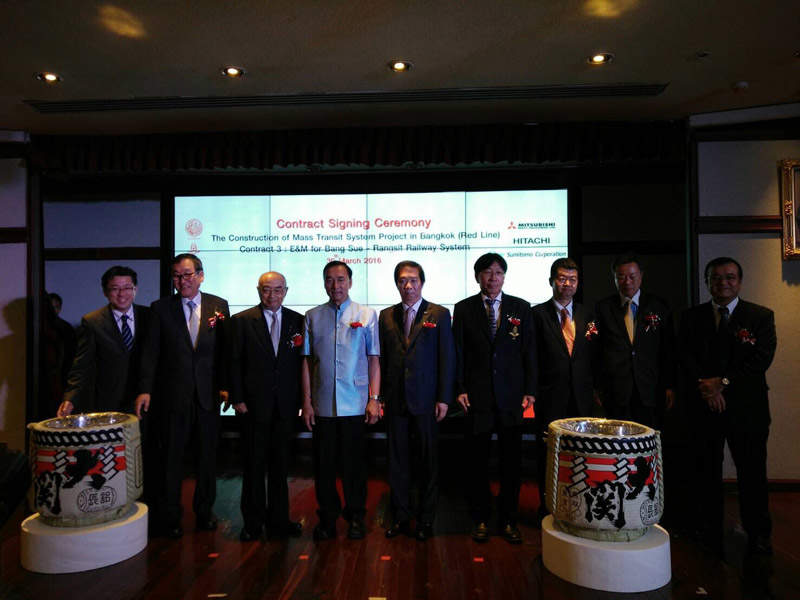
The Red Line commuter train system is a suburban rail project under construction in Bangkok Metropolitan Region, Thailand.
The project is part of Bangkok’s Mass Rapid Transit Master Plan, which aims to develop an urban rail transit network to serve the Greater Bangkok area, the political and economic centre of Thailand and home for 10 million people.
The Red Line will connect the Bangkok region with north, east, south and west suburban areas. It is expected to serve 131,000 commuters a day when it starts services in 2019, 262,000 passengers a day by 2029, and 336,000 people a day by 2034.
The project is expected to take four years to complete.
Purpose of the Red Line
The Bangkok rail system currently operates three rail lines, including the Green Line, the Blue Line and the Airport Rail Link. However, due to the limited number of lines and poor connectivity between them, 75% of public transportation still depends on buses. The number of automobiles and other vehicles is also increasing, leading to traffic congestion and air pollution.
The Red Line was proposed by the State Railway of Thailand (SRT) to address the traffic problems and encourage a shift from road transport to urban rail. The proposal was approved in 2007 and the first construction phase started in 2013.
Details of Red Line commuter rail project
The Red Line project includes the North Line and West Line. The North Line will be a 26.4km line from Bang Sue, located in the centre of Bangkok, to Rangsit in the north. The 14.6km West Line will stretch between Bang Sue and Taling Chan.
The first phase of the project includes development of the North Line from Bang Sue to Rangsit.
Bang Sue-Rangsit section route details
The alignment of the Bang Sue-Rangsit section begins at Pradiphat T-junction, which is 1.8km south of Bang Sue station.
The route runs along the northern railway, passing Chatuchak, Bang Khen, Lak Si and Don Muang to reach Rangsit Station in Prathum Thani Province. In the future, the route will be extended to Thammasat University Rangsit Campus.
Of the total 26.4km, 19.2km route will be elevated from Bang Sue area to Don Muang, while the 7.1km-long section from Don Muang Station to Rangsit will be at-grade and lined with fences. The latter will be connected to the existing northern railway and feature gauge-railway track.
Stations along the North Line
The North Line will have a total of ten stations, including eight planned for the first construction phase and two for the future.
The stations in the first phase include Bang Sue Grand, Chatuchak, Bang Khen, Thung Song Hong, Lak Si, Kan Kheha, Don Muang, and Rangsit. Future stations will include Wat Samian Nari and Lak Hok.
Signalling system for the Red Line
The stations along the line are designed to serve long-distance, commuter, and freight trains supported by an extensive railway system network. The train control and signalling system will be integrated with the train control and depot at Bang Sue Grand station. Diesel locomotives along the Red Line will be integrated with the community train system.
Electric commuter trains will have an automatic train operation (ATO) system, while diesel locomotives will be installed with an automatic train protection (ATP) system, which ensures compatibility betwen operating systems and safety for passengers.
Contractors involved
The project is divided into three contracts, each of which includes design, development and procurement of systems.
The first contract was awarded to a joint venture (JV) of Sino-Thai Engineering and Construction (60%) and Unique Engineering and Construction (40%).
The scope of work includes civil works for Bang Sue Grand Station and depots, construction of the Bang Sue Grand Station and Chatuchak stations, and an elevated railway structure, as well as maintenance depots for commuter train, long-distance train and stabling yards. The contract is worth approximately THD30bn ($850.1m).
The second contract was secured by Italian-Thai Development Public Company in January 2013. Valued at THB21bn ($601m), it includes the construction of six elevated stations, as well as 20.15km-long elevated and at-grade railway lines. It also includes the development of a local road and drainage system, and a basic structure for the future Wat Samian Nari and Lak Hok extensions.
Contract 3 includes the engineering, procurement and construction of an railway electric and mechanical (E&M) system. Mitsubishi Heavy Industries (MHI), Hitachi and Sumitomo Corporation secured the contract, valued at THB32.39bn ($917.85m), in March 2016.
MHI will design and procure systems, Hitachi will design and build rolling stocks, Sumitomo will conduct administration and local installation work.
Financing
Thailand’s Ministry of Finance (MOF) received an official development assistance (ODA) loan of JPY63bn ($576.58m) from Japan International Cooperation Agency (JICA) for the construction of the Bang Sue-Rangsit section (North Line). The West Line will be constructed using Thai Government’s own funds.






